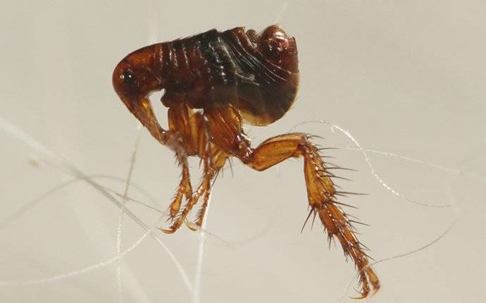We all know what it is like to have an annoying itch; you scratch it, but it keeps bothering you. It is a real nuisance when you have several parts of your body tingling. You rub your hair, arms, legs, and back, chasing the ever-illusive cause of the irritation. You may be feeling itchy right now reading this article!
One pest that causes us to itch is the flea. These tiny ectoparasites quickly crawl around our bodies and compel us to constantly scratch. If you feel itchy and constantly are scratching, you may have fleas. Secure the Conroe pest control team from Chase Pest Control. We've been eliminating fleas since 1997 and can give you the relief you need.
Fleas: Facts and Identification
Fleas are difficult to trap and study, and a little knowledge about them may help determine if you have fleas, bed bugs, lice, or mosquitoes infesting your Conroe home. First, let's start with some interesting facts:
- Fleas bite animals and humans.
- Fleas are parasites.
- Fleas are wingless.
- Fleas are visible to the naked eye.
- Fleas are 1/12 to 1/6 inch in length.
- Fleas have dark red to brown bodies.
- Fleas can jump as high as 13 inches.
- Fleas can travel from pets to humans.
- Fleas are active in temperatures above 45℉.
Although we tend to associate fleas with dogs, and there is a dog flea species, the most common type of flea in households is the cat flea.
What Do Fleas Do Without A Host?
Fleas feed on the blood of cats, dogs, rodents, and humans. They need blood to reproduce, develop, and survive. The time a flea can survive without a host depends on the stage of development. A flea in the pupae stage can live in its cocoon for up to two years without a host; however, once it emerges and attaches to a host, it can live only an average of four days if separated from the host.
The flea life span of an adult flea is about 100 days. In addition to the host, other factors that determine the longevity of a flea are humidity and temperature. Lower temperatures and high humidity increase the longevity of a flea without a host, and in those conditions, an adult flea may survive up to two weeks.
Can Fleas Burrow Under Human Skin?
Flea bites on the skin occur when a flea uses the claws on the bottom of its six legs to grab onto the host. Once the claws latch, it uses two stylets to pierce the skin drawing blood through a third stylet. As it feeds, it injects saliva with an anticoagulant into the wound. In some people, the saliva triggers a flea allergy.
Dog and cat flea species, common in the United States, do not burrow under the skin. A flea that burrows under the skin is a mated female jigger flea (Tunga penetrans). This flea is rare in North America, and there are no known cases in Texas.
Professional Pest Control Is The Answer To Flea Infestations
Americans spend billions each year attempting to eradicate fleas. These tiny pests are difficult to eliminate due to their rapid reproduction, mobility, and survivability during development.
The best way to get rid of fleas in the house is to secure the team from Chase Pest Control. When you schedule a free inspection, our trained experts will evaluate your situation and develop a customized strategy to eradicate the fleas. Our licensed pest control team will treat your home using safe and effective solutions.
Contact us today and let us stop the flea infestation in your Conroe home so you can stop itching at night and relax. See why our customers consistently recommend us to others.

